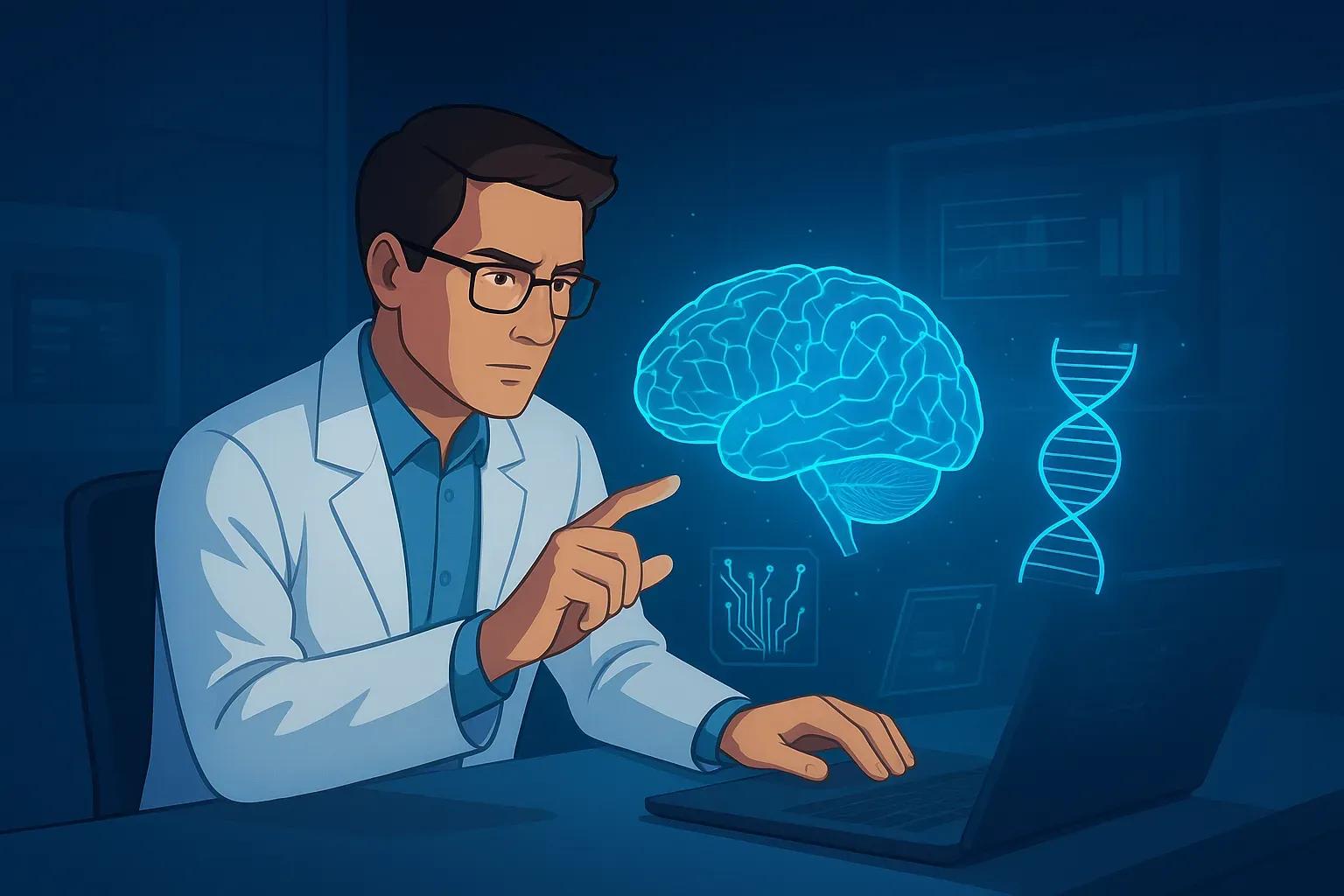When we think of artificial intelligence in science, many (or at least the more nerdy ones) might imagine a futuristic scene in the style of Marvel: Tony Stark conversing with JARVIS, his virtual assistant, while holograms and 3D models of the brain with its neural connections, or even blueprints of his upcoming creations, are displayed in the air. Unfortunately, in real life, doing science using AI is not as cinematic or fun. Or maybe it is, but not in the way we expect. The most important thing is that it opens equally surprising doors that allow us to face many current challenges in an innovative way. Nowadays, artificial intelligence has become a key tool for biopharmaceutical companies like Pfizer or AstraZeneca, enabling the acceleration of clinical trials. Thanks to it, they have been able to optimize protocol design, improve patient recruitment, and real-time data analysis, thereby reducing development times and increasing the safety of studies.
In the academic field, a group of researchers recently published a study in the journal *Cell* where they demonstrated how AI can tackle one of the main public health crises: antibiotic resistance. Year after year, five million people die from infections with bacteria that have evolved and become too strong for existing drugs.
In this study, they used generative artificial intelligence to design new antibiotics from scratch capable of eliminating resistant bacteria. They created a library of thirty million compounds, of which twenty-two were selected and synthesized in the laboratory based on other AI models' predictions of how effective, safe, and viable they could be. Of these, six showed antibiotic properties, and one of them demonstrated the ability to kill bacteria faster than some existing antibiotics. Even when scientists tried to force its resistance in the laboratory, the bacteria could not survive. The most remarkable thing is that this achievement not only provides new drug candidates against ten different strains (previously resistant) but also paves the way for the study and design of others.
But AI is not only a fundamental piece in health but also in astronomy, where it facilitates the massive processing of data generated by modern telescopes, enabling the exploration of realistic simulations of black holes and the detection of cosmic events in real time. In geosciences, it has improved the prediction of natural phenomena and the analysis of satellite images with greater precision.
It is key to highlight that when we talk about artificial intelligence in science, we are not referring to simple chatbots like those we use daily (*ChatGPT* or *Gemini*), but rather to very complex models trained with large amounts of data capable of carrying out specific tasks, reusing what they “know” to solve new problems.
However, as in any superhero movie, there is also a downside, and that is that while AI models are efficient, many researchers report that they tend to exhibit biases and errors known as “hallucinations,” meaning they establish nonexistent relationships and present their conclusions with unfounded confidence. It is important, then, to have human critical review of these models to perceive where they fail and to incorporate protocols for their responsible use.
Ultimately, AI is a valuable ally of science, as long as it is used ethically, responsibly, and with scientific rigor.
By Manuela Beltrán, student of the Biotechnology degree at UADE.

Comments